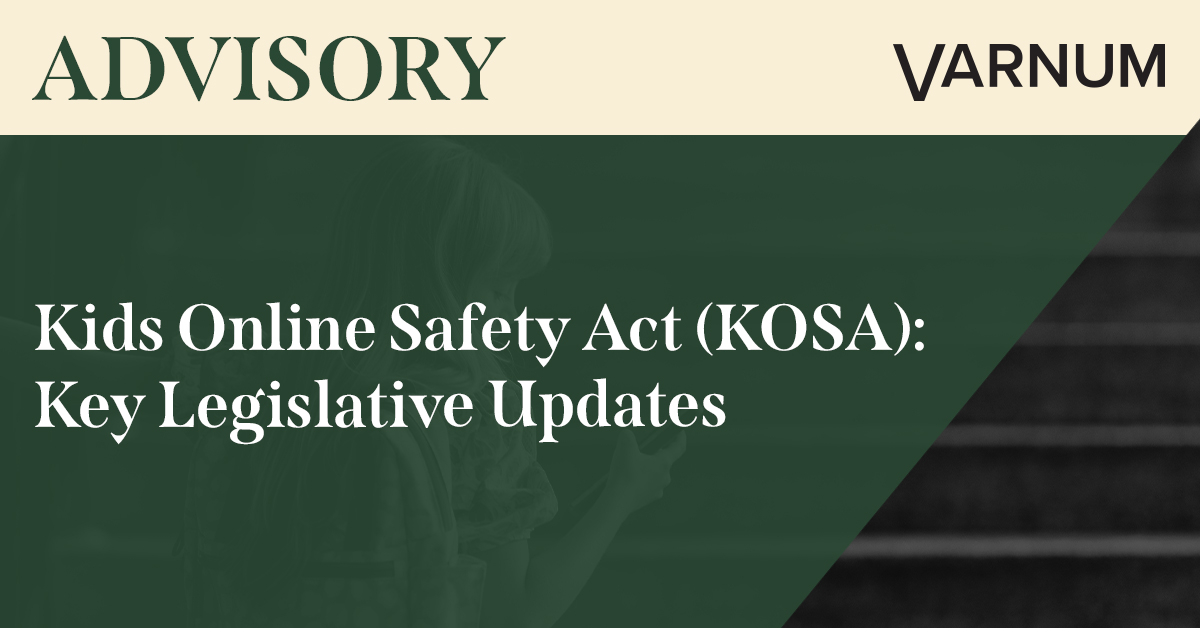Starting February 21, 2025, Michigan’s Earned Sick Time Act (ESTA) will replace the Michigan Paid Medical Leave Act (PMLA), significantly expanding employee eligibility for sick time benefits. To assist employers and human resources professionals, Varnum’s Labor and Employment team has prepared this FAQ primer based on the current version of ESTA. Please note that amendments to the ESTA have been proposed in the Michigan legislature; should any aspect of the law change, Varnum’s Labor & Employment team will provide updates.
Who is covered by ESTA?
All Michigan employers, except the U.S. government, must adjust or implement policies to comply with ESTA requirements. ESTA applies, regardless of industry, to employers that employ one or more employees in Michigan.
Which employees are eligible to receive earned sick time?
All employees are eligible, regardless of classification. Salaried exempt employees under the Fair Labor Standards Act are presumed to work 40 hours per week or, if their position is based on a weekly schedule of fewer than 40 hours, their regular number of scheduled hours.
If employees are covered by a collective bargaining agreement (CBA), the Act will apply to such employees starting on the CBA’s expiration date, regardless of any provisions extending the CBA’s duration. If a particular CBA is silent as to sick time or PTO benefits, Labor and Economic Opportunity Commission (LEO) has stated that the Act may apply beginning on February 21, 2025.
What is the accrual rate for earned sick time?
Beginning February 21, 2025, or upon the employee’s start date, whichever is later, employees will accrue 1 hour of sick time for every 30 hours worked. Employers may require new employees to wait 90 days after hire to use accrued sick time, but accrual begins immediately upon hire.
How much earned sick time are employees entitled to?
- Small businesses (fewer than 10 employees as calculated under the statute): Must provide up to 40 hours of paid earned sick time, with an additional 32 hours unpaid.
- All other employees: Must provide up to 72 hours of paid earned sick time per year.
Does earned sick time carry over?
Yes. All accrued and unused sick time must carry over to the following year. ESTA does not impose a cap on accrual or carryover.
Can employers frontload the earned sick time?
Yes. Employers may frontload the full years’ worth of sick time at the beginning of the benefit year. However, the frontloading method implemented must comply with the ESTA’s accrual, usage, carryover and other provisions.
Does earned sick time have to be paid out?
No. The statute does not require employers to payout unused time. Employers should check and confirm their written policies align with their desired practices concerning payout, as a separate law requires employers to follow the policies they have set forth in writing.
How should employers transition from their current policies to ESTA compliance?
The transition to ESTA compliance will vary depending on an employer’s current policies, workforce structure, technology, and their priorities related to cost, culture, level of administrative effort, and the like. Employers should first familiarize themselves with ESTA requirements. Then evaluate their existing leave policies and their hierarchy of priorities in comparison with ESTA’s requirements to determine whether a new standalone ESTA policy or modification of existing policies meets their business needs. Employers should then draft new or amended policies that comply with the ESTA, for implementation in accordance with the Act. Employers should also review and confirm that their payroll and recordkeeping systems are equipped for ESTA compliance by the effective date and should train managers and personnel who will have new responsibilities associated with the Act.
Should we implement new policies now?
ESTA is scheduled to take effect on February 21, 2025. Although major changes are not currently expected ongoing legislative action between now and the effective date could lead to some changes in the act’s requirements. For most employers, the appropriate course may be to prepare for compliance by the deadline while staying informed about potential changes, and to implement on the Act’s actual effective date rather than sooner.
Navigating ESTA’s requirements can be complex. Varnum’s labor and employment attorneys have prepared a comparison chart between the PMLA and ESTA to help guide you through the transition. Contact us with any questions or for assistance in achieving ESTA compliance.





